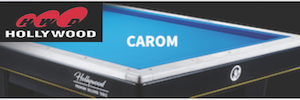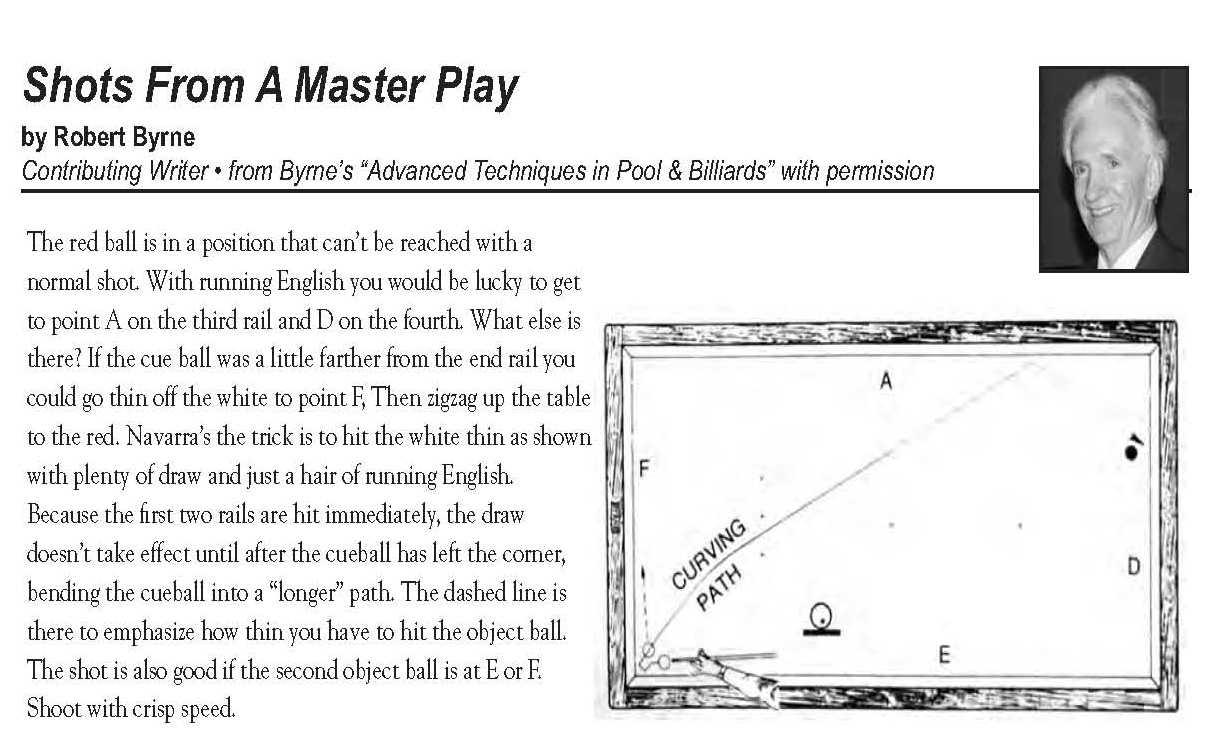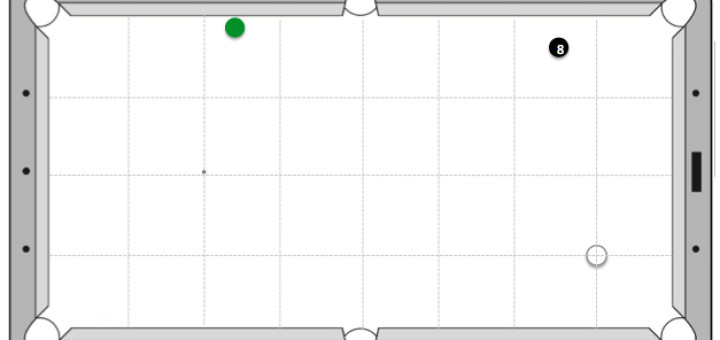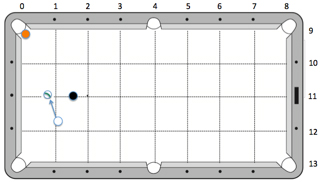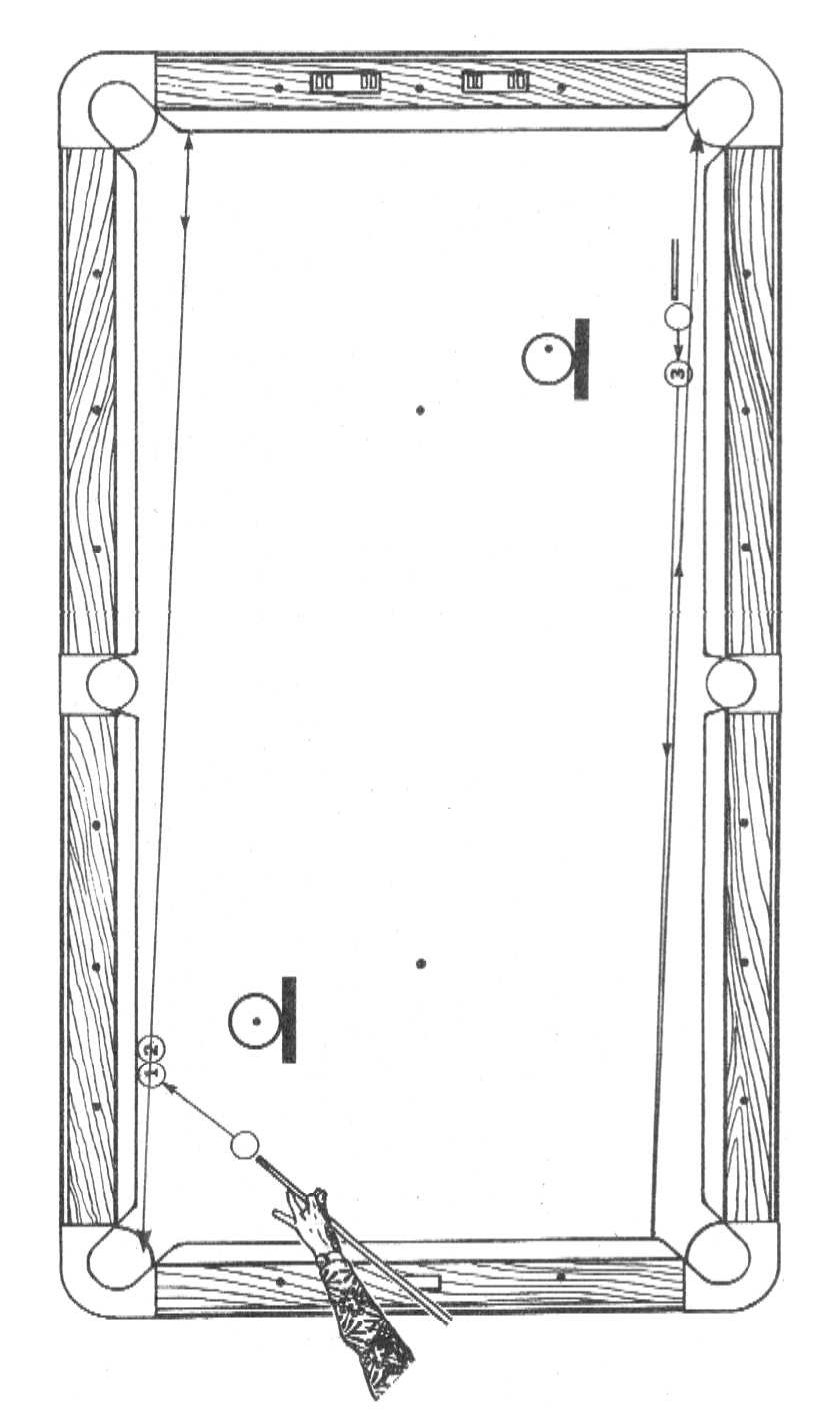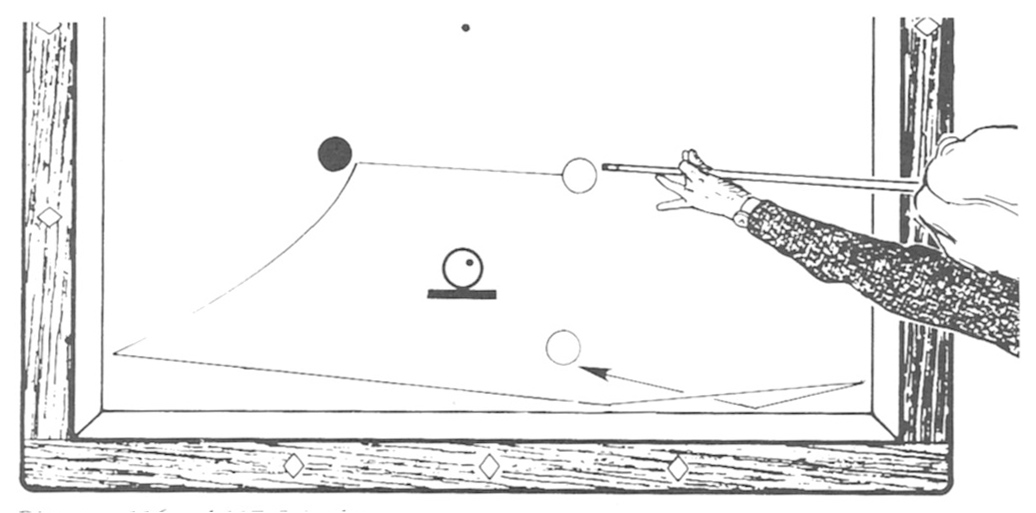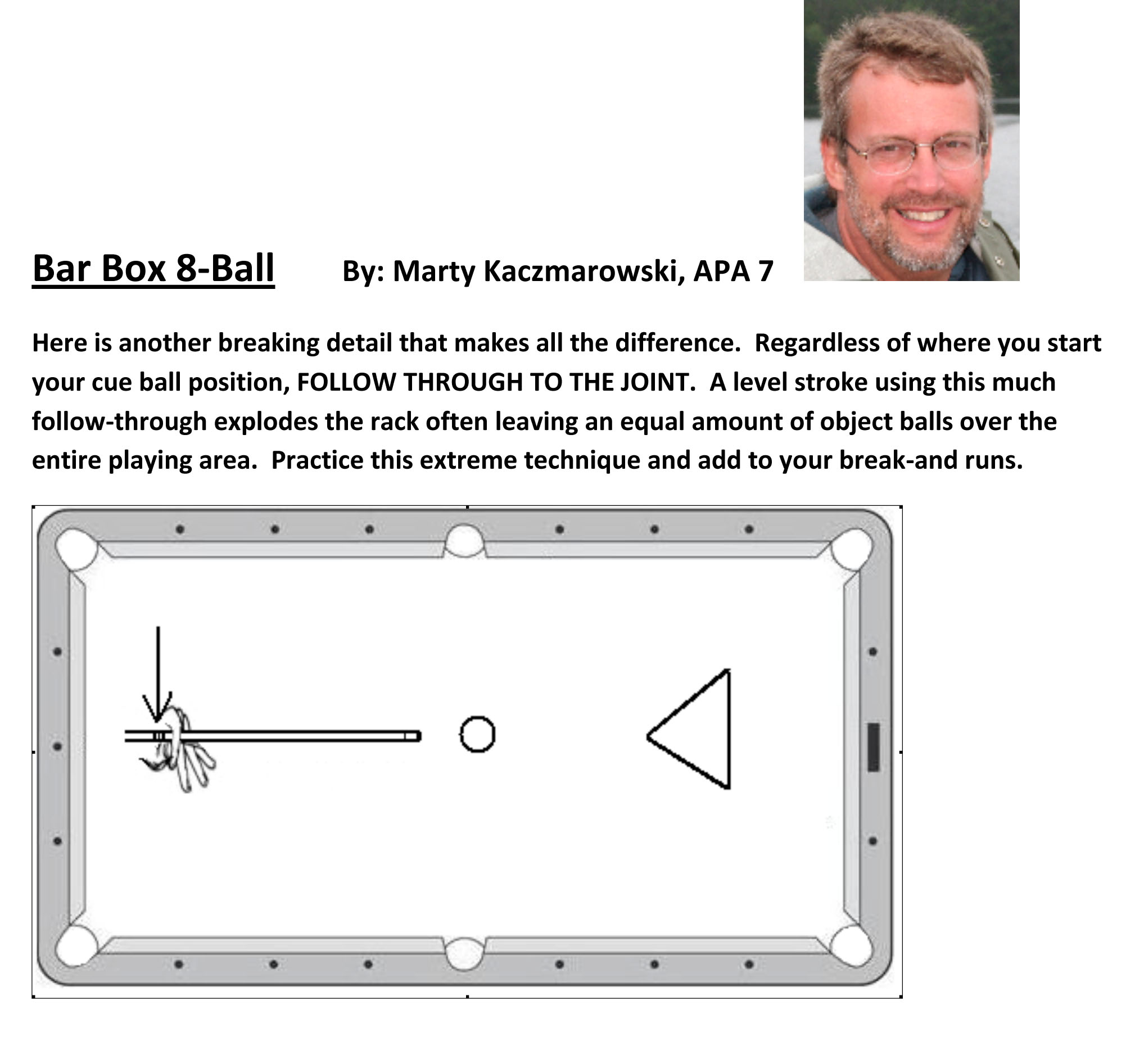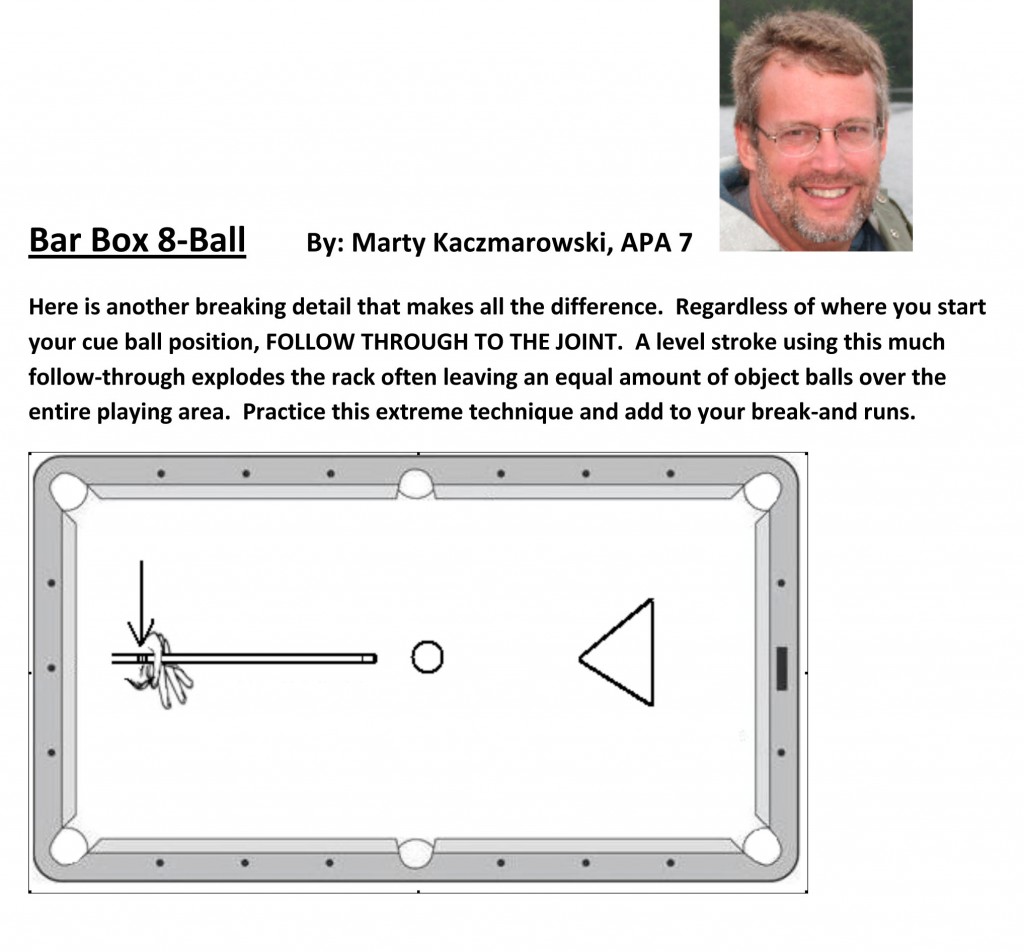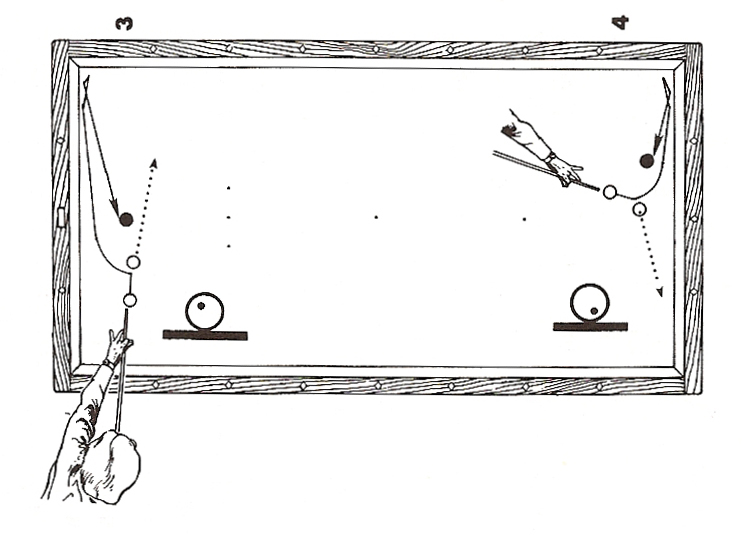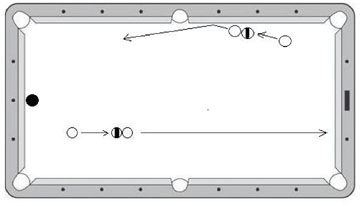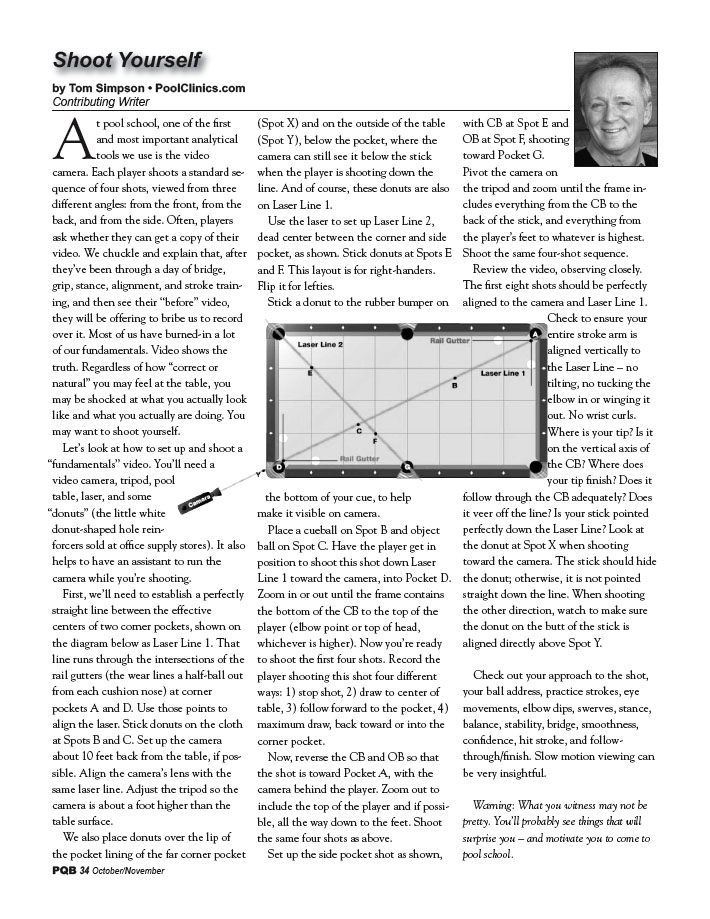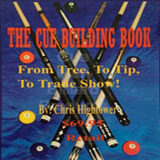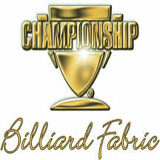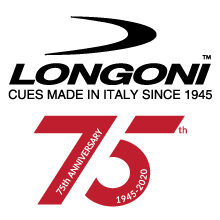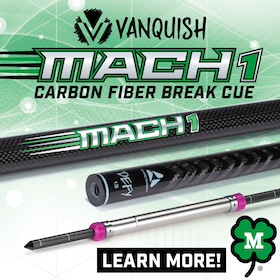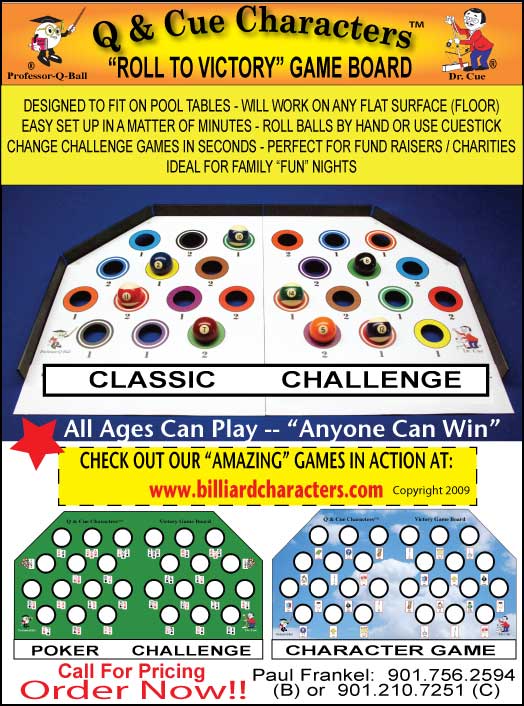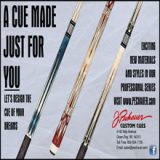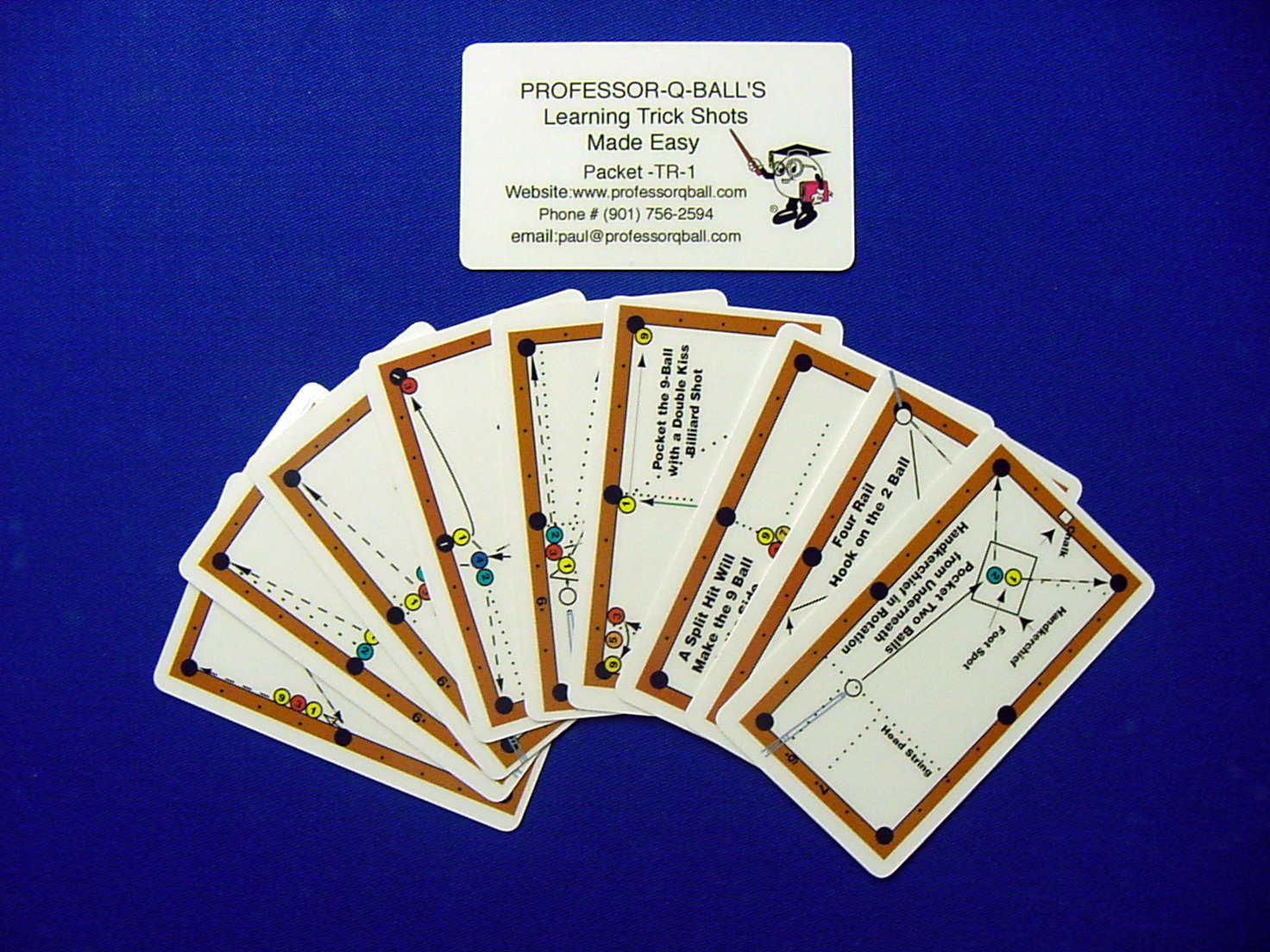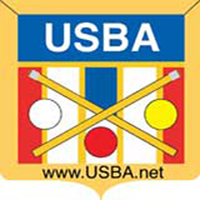Category: Instructional Articles
What Would a Sucker Do?
If you look around the room and don’t see any suckers.YOU are the sucker! You made all of your stripes and are now on the 8-ball. Your opponent has one solid left. What do...
What would a sucker do?
What Would a Sucker Do? (Part 4) You have stripes here. You each only have one ball left and the 8-ball. Your opponents ball, the solid, is sitting in the jaws and is directly...
Spin Shot By Robert Byrne
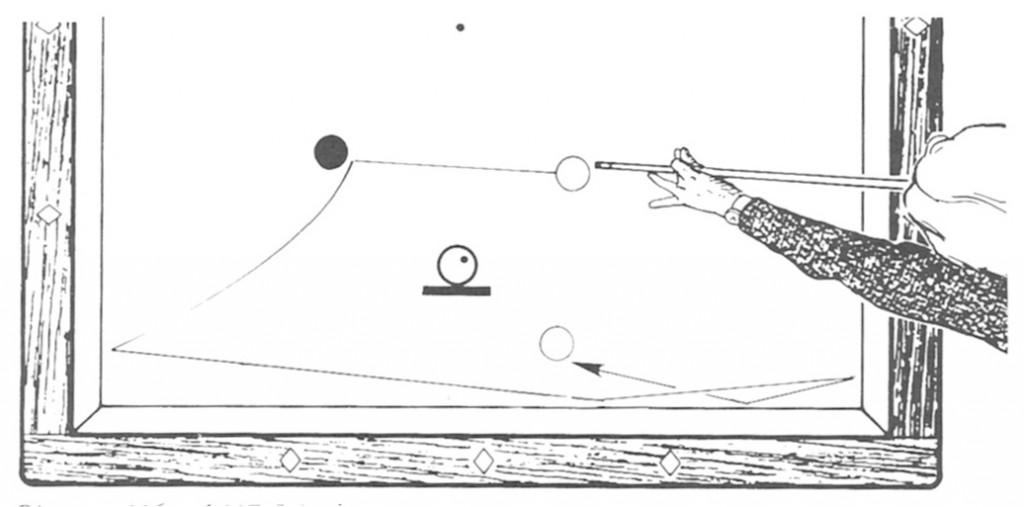
The through-the-hole double-the-rail pattern drawn in the diagram is not normally called a spin shot, but it has two characteristics after the cueball leaves the first rail-slow speed and tremendous spin. It is stroked as a force follow with high right-hand English. The speed on the cueball is killed not by the full hit but by the negative angle of approach into the first rail. The action is beautiful because the cueball speeds up after hitting the fourth rail.
More shots with a Curving Cue ball
More shots with a Curving Cue ball By Robert Byrnes
Shot 3- demonstrates a common application of follow. Trying to double the rail by going thin off the white is impossible because the angle into the first rail would be too steep. With a full hit, however, the cue ball steps sideways before diving forward, hitting the first rail at such a shallow angle that the shot becomes relatively easy.
Long and Short


The 5-ball bank is set up so that the angles from the first-rail contact point to the side pocket and the corner pocket are the same. Note how the axis of the cue passes over the middle of the corner pocket and how the 5-ball is aimed at the second diamond.
Rail first to score
“From Byrne’s Complete Book of Pool Shots, by Robert Byrne. Used with permission.”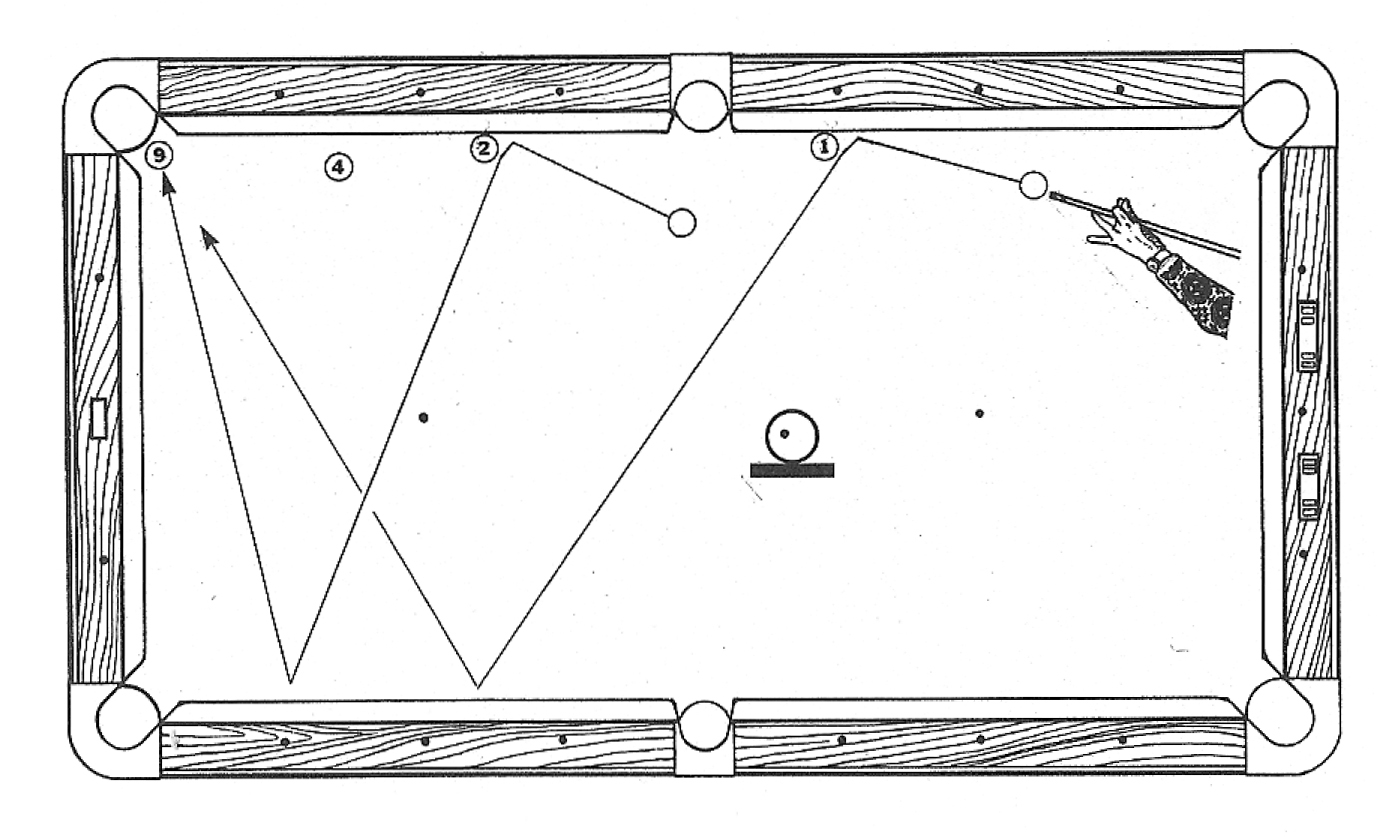
The 9-ball is hanging on the lip. If you decide to try to make if off the 1-ball, the best bet is hit the rail first with left sidespin.
The same is true from the other cue ball if the 2-ball is the lowest ball on the table.
Drop Anchor by Tom Simpson
Tom Simpson
In a previous column, I talked about the idea of the grip hand feeling soft. I called it “œcloud hands”. I suggested that, as you approach the shot, both hands should have this cottony, extremely soft character. The goal is to maintain that softness in the grip hand all the way through to the completion of the shot, preventing micro-movements in the hand that could cause a miss.
Rail-First Stroke Shot by Byrnes
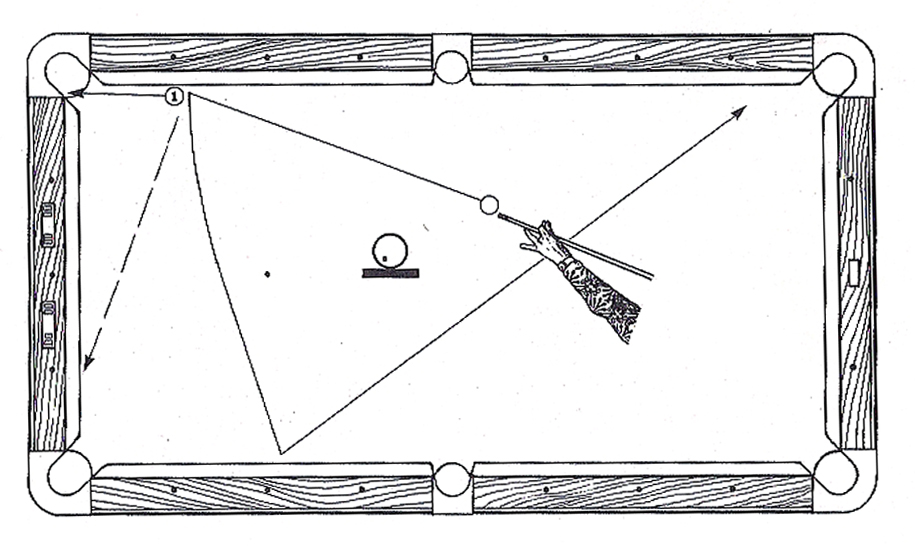
Rail-First Stroke Shot
With draw and left sidespin, it is possible to hit the rail first, make the 1-ball, and bring the cueball back to the right end of the table.
Shoot Yourself By Tom Simpson
At pool school, one of the first and most important analytical tools we use is the video camera. Each player shoots a standard sequence
of four shots, viewed from three different angles: from the front, from the back, and from the side. Often, players ask whether they can get a copy of their
video. We chuckle and explain that, after they’ve been through a day of bridge,grip, stance, alignment, and stroke training, and then see their “œbefore” video,
they will be offering to bribe us to record over it. Most of us have burned-in a lot of our fundamentals.
Video shows the truth. Regardless of how “œcorrect or natural” you may feel at the table, you
may be shocked at what you actually look like and what you actually are doing. You
may want to shoot yourself.


